





Urine incontience after the delivery
Urine incontience after the delivery – morbid condition at women at which there is an involuntary urination. The puerperal involuntary urination is carried more often to a stressful incontience of urine when allocations happen at an exercise stress, laughter, sneezing, cough, sexual intercourse (in cases of sharp increase in intra belly pressure).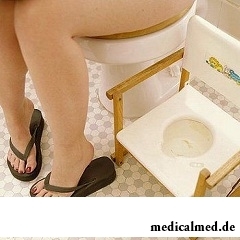
The incontience of urine is not a disease, and disturbance of normal functioning of an urinary system. The incontience of urine is the puerperal complication arising at 10% of women during the first pregnancy and childbirth and at 21% of women during the second and each subsequent pregnancy. At natural childbirth the probability of development of an incontience of urine is slightly higher, than at Cesarean section.
The puerperal incontience of urine is not natural state of the woman and demands correction. Urethral function is recovered on average within a year. In certain cases independent recovery does not happen. The incontience of urine does not pose an essential threat for health of the woman (in cases of lack of complications in the form of inflammatory and infectious processes), however considerably reduces quality of life. At timely diagnosis and the correct therapy the puerperal incontience of urine completely is eliminated. If in time not to diagnose a problem and not to take a measure for normalization of an urination, the state can be aggravated over time. The started cases give in to correction much more difficult, are characterized by a frequent recurrence.
Reasons of development of an incontience of urine after the delivery
After the delivery stretching and weakening of muscles of a pelvic bottom which provide a sufficient support for a uterus throughout all pregnancy is the main reason for an incontience of urine.
Pelvic bottom – the powerful muscular and fascial layer serving for maintenance of internals, saving their normal provision, regulation of intra belly pressure, and also promoting an expulsion of the fetus at childbirth forming a parturient canal. The muscle strain of a pelvic bottom occurs under weight of a uterus and the fruit developing in it. Difficult delivery, a large fruit, birth trauma are also the reasons of weakening of muscles.
The incontience of urine is after the delivery caused by the following factors:
- Disturbance of an innervation of muscles of a pelvic bottom and bladder;
- Disturbance of switching function of an urethra and bladder;
- Pathological mobility of an urethra;
- Instability of position of a bladder, fluctuation of intravesical pressure.
There is a number of the risk factors promoting development of an incontience of urine after the delivery:
- Heredity (genetic predisposition to disturbance development);
- Features of an anatomic structure of bodies of a basin and muscles of a pelvic bottom;
- Disturbances of neurologic character (diseases of a nervous system, multiple sclerosis, Parkinson's disease, and also spine injuries);
- Surgical interventions at childbirth and birth trauma;
- Large fruit;
- An excessive set of weight during pregnancy.
Urine incontience symptoms after the delivery
In medical practice allocate 7 main types of an incontience of urine:
- Urgentny incontience of urine – any urination at a sharp, strong desire which is not giving in to control;
- Stressful incontience of urine – urination at any types of an exercise stress, increase in intra belly pressure;
- Ischuria of a paradox or incontience of refilling – release of urine at a full bladder;
- Reflex incontience – an urination at influence of provocative factors (loud shout, a fright, a water sound);
- Bed wetting;
- Involuntary continuous dribble of urine;
- Dribble of urine after end of a full-fledged urination.
The urine incontience after the delivery often is carried to a stressful incontience (SNM). Statement of the exact diagnosis requires comprehensive examination.
The diagnosis of an incontience of urine is after the delivery made if at the woman the following symptoms are observed:
- Regular episodes of involuntary release of urine;
- The essential volume of urine at each episode;
- Increase of releases of urine at physical activity, stresses, during sexual intercourses.
At irregular episodes of an involuntary urination it is also necessary to see a doctor for correction of a state. It should be noted that isolated cases of an involuntary urination in insignificant volumes are characteristic also of a healthy organism.
Urine incontience after the delivery: treatment and forecasts
It is necessary to approach treatment of disturbance of an urination correctly. Many women ignore a problem, and, without seeing a doctor, try to fix independently a problem or to reconcile to this morbid condition. At an urine incontience after the delivery treatment assumes conservative and radical methods.
At an incontience of urine it is not recommended to self-medicate as this state demands careful inspection for an exception of possible inflammations and the infectious reasons of development of an incontience.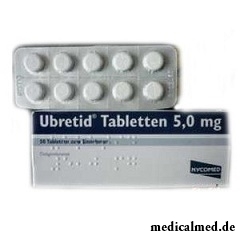
At an urine incontience after the delivery treatment does not assume use of medicamentous drugs. Medicines are appointed in urine incontience complication cases inflammatory process or an infection.
Diagnosis of an incontience of urine is made by the following methods:
- Collecting the anamnesis (the subjective signs of the patient characterizing disturbance);
- Survey on a gynecologic chair;
- Tsistoskopiya (endoscopic research of a bladder);
- Conducting laboratory tests;
- ULTRASONOGRAPHY;
- Complex urodynamic research (tsistometriya, profilometriya, urofloumetriya).
Conservative methods of treatment of an incontience of urine after the delivery are performance of physical exercises for strengthening of muscles of a pelvic bottom and so-called step-free the therapy assuming a training of muscles by deduction of certain small weights of the increasing weight.
Criterion for evaluation of efficiency of conservative techniques is total disappearance of episodes of an involuntary urination. On average normalization of an urination borrows till 1 year.
At inefficiency of conservative techniques of treatment of an incontience of urine surgical methods of correction of a problem are after the delivery applied. Now low-invasive operational techniques practice.
The main methods of surgical correction are:
- Uretrotsistotservikopeksiya – full-fledged surgical intervention for fixation of a bladder, an urethra and a uterus. This method is used extremely seldom at essential disturbance of a structure of pelvic muscles;
- Administration of gel – manipulation is carried out to paraurethral space as in the conditions of a hospital, and is out-patient. At such method of correction of an incontience there is high a risk of development of a recurrence;
- Slang loopback surgical corrections – placement under a middle part of an urethra of the synthetic loop providing additional support.
The well-known drug "Viagra" was initially developed for treatment of an arterial hypertension.

To look healthy and means well-groomed not only to be pleasant to people around, but also to feel strong, sure and taken place. To Spa...
Section: Articles about health
Venereal diseases in medicine are called the infections which are transmitted preferential sexually, now they and are called - infections, sexually transmitted, or STD. Among them is also life-threatening. In spite of the fact that majority...
Section: Articles about health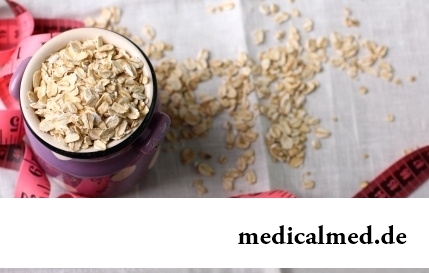
The list of stereotypes of which, apparently, all know strongly includes following: British surely eat porridge for breakfast. Perhaps, not all modern residents of Britain arrive quite so, but for those from them which continue to follow this tradition, it is possible to be glad sincerely: oat flakes are a product which regular use not only helps the person to keep force and beauty long. Porridge in a special way influences an organism, protecting it from seriousness...
Section: Articles about health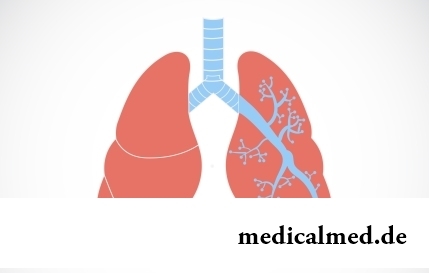
They say that to ensure health and longevity of people it is obliged. Really, at competent approach to these questions, we will pass...
Section: Articles about health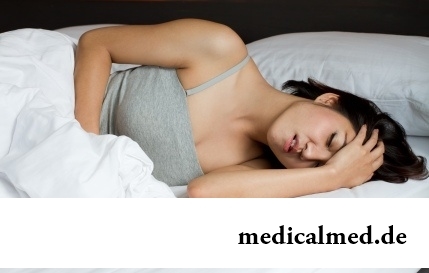
Nightmares belong to the most unpleasant frustration. Statistically, they happen at 4% of adults, and almost at 70% of children and teenagers. During a nightmare of people dreams himself in extremely difficult, life-threatening situation. It wakens suddenly, in...
Section: Articles about health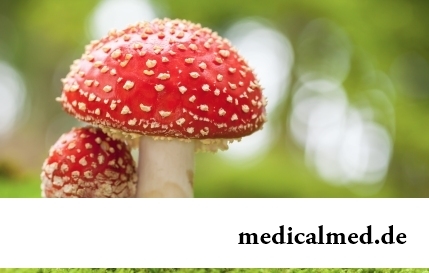
Mushrooms - the surprising inhabitants of our planet having a set of wonderful qualities. Thanks to one of them, a mold mushroom of Penicillium notatum, the first natural antibiotic - penicillin was received nearly 80 years ago. The mankind is obliged to this opening by millions of saved lives....
Section: Articles about health
From the failure of work of immune system which is shown in the form of an allergy, statistically, more than 40% of the population of the globe suffer. In большинс...
Section: Articles about health
The dietology, as well as other sciences, does not stand still. Food stuffs are exposed to comprehensive study, and scientists obtain new information on their properties and influence on a human body. Unfortunately, this reasonable and natural process from time to time д...
Section: Articles about health
Memory is an ability of the central nervous system to fix, keep and as necessary to reproduce information on knowledge or skills received by the person or an animal during life. The mechanism of this process is up to the end not studied....
Section: Articles about health
Practically each person is familiar with the annoying, pulling, unscrewing pains caused by overcooling of muscles of a back. In некото...
Section: Articles about health
Climax - process of fading of reproductive function of an organism in process of its aging. At women the main sign of its approach is the termination of a menstrual cycle. Officially the menopause is diagnosed when periods are not observed in течен...
Section: Articles about health
Aging — natural and inevitable process. Over time our skin loses elasticity, on it saggings are formed, the face form loses former clearness. The procedure of nitevy lifting (nitevy tightening) can successfully solve this problem. In order that it is better to get acquainted with this popular procedure, we will tell you 6 cognitive facts about it....
Section: Articles about health
About influence of fasting days on an organism it is told much – both about advantages, and about shortcomings. It is considered that fasting day...
Section: Articles about health
The modern person not always manages to find housing in the environmentally friendly region and such work which would not do harm to health. With food stuffs at first sight the situation is much better: shops are overflowed with goods which are positioned пр...
Section: Articles about health
Work of a brain is extremely complex and in many respects is not studied yet. It is confirmed also by the features of thought processes which are shown when the person sleeps. Let's tell about some of them....
Section: Articles about health
Quite large number of people adheres to the principles of vegetarian food. But how to be if in a family of vegetarians is д...
Section: Articles about health
What will only not be thought up by persons interested to have a beautiful figure. Here the last innovation – for weight loss needs to be eaten greasy food. Let's understand whether there is at a fatty diet common sense....
Section: Slideshow
Women quite often suffer from complexes concerning the sizes of the bust. Strangely enough, not too modest, and excessively curvy shapes become the reason of sincere discomfort sometimes. Except psychological problems, the big bust sometimes creates also quite notable malfunctions with health: his owner can feel muscular dorsodynias, feeling of constant fatigue and difficulty of breath. Over time excess loading leads to development of diseases позвоночн...
Section: Articles about health
The medicine promptly develops, and the fact that else quite recently it seemed by miracle can now. We are not surprised any more to the fact that sport...
Section: Articles about health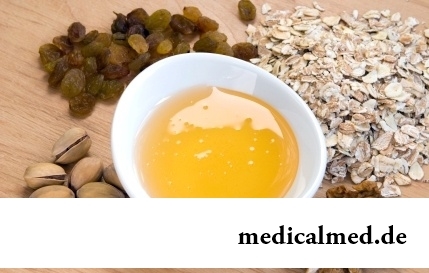
Let's begin with the fact that a separate illness which is called "adjournment of salts", just does not exist. In practice this household name of disbolism leading to development of a number of diseases. Pathological process consists that in an organism проис...
Section: Articles about health
The phenomenon of the panic attack is known long ago, but the reasons of its emergence still are up to the end not found out. It is established that more than 30% of people at least once in life become the victims of very unpleasant phenomenon: without everyones on that the reasons they have a feeling of horror which is followed by a cardiopalmus, a shiver and the fever or feeling of sudden heat increased by sweating, breath constraint, dizziness, nausea....
Section: Articles about health
A lot of things depend on a condition of a backbone in a human body, a backbone - not only a support for a body, it also contain...
Section: Articles about health
The brain of the person is studied not one hundred years, but the quantity of the riddles connected with this body increases rather, than decreases. Perhaps, numerous delusions concerning a structure and functioning of a brain, many are explained by it from...
Section: Articles about health
Household skills which to us so diligently imparted in the childhood it appears, not always bring only benefit. According to results of the last researches, some habits which for a long time were considered useful and even necessary can become the reason of serious indispositions. Here only seven the most widespread of them....
Section: Articles about health
The number of long-livers is very small. One person from 5 thousand lives up to age of 90 years, and the centenary boundary steps only about...
Section: Articles about health
Summer in the heat. Many are going to spend vacation abroad. Travelers the tender seas, rest on beaches wait, for sightseeing, campaigns on natural and cultural reserves. But, unfortunately, on vacation also problems about health can wait for us...
Section: Articles about health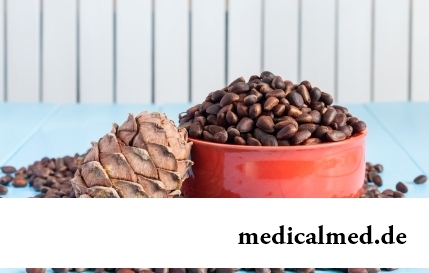
The hysteromyoma is diagnosed more than at a third of women 35 years are more senior. This high-quality new growth which at early stages successfully resolves by means of medicines. It is necessary to resort to an operative measure only when patients too late address specialists, or therapeutic methods do not give the expected effect because of specific features of an organism. Besides, there is a large number of quite effective national...
Section: Articles about health
